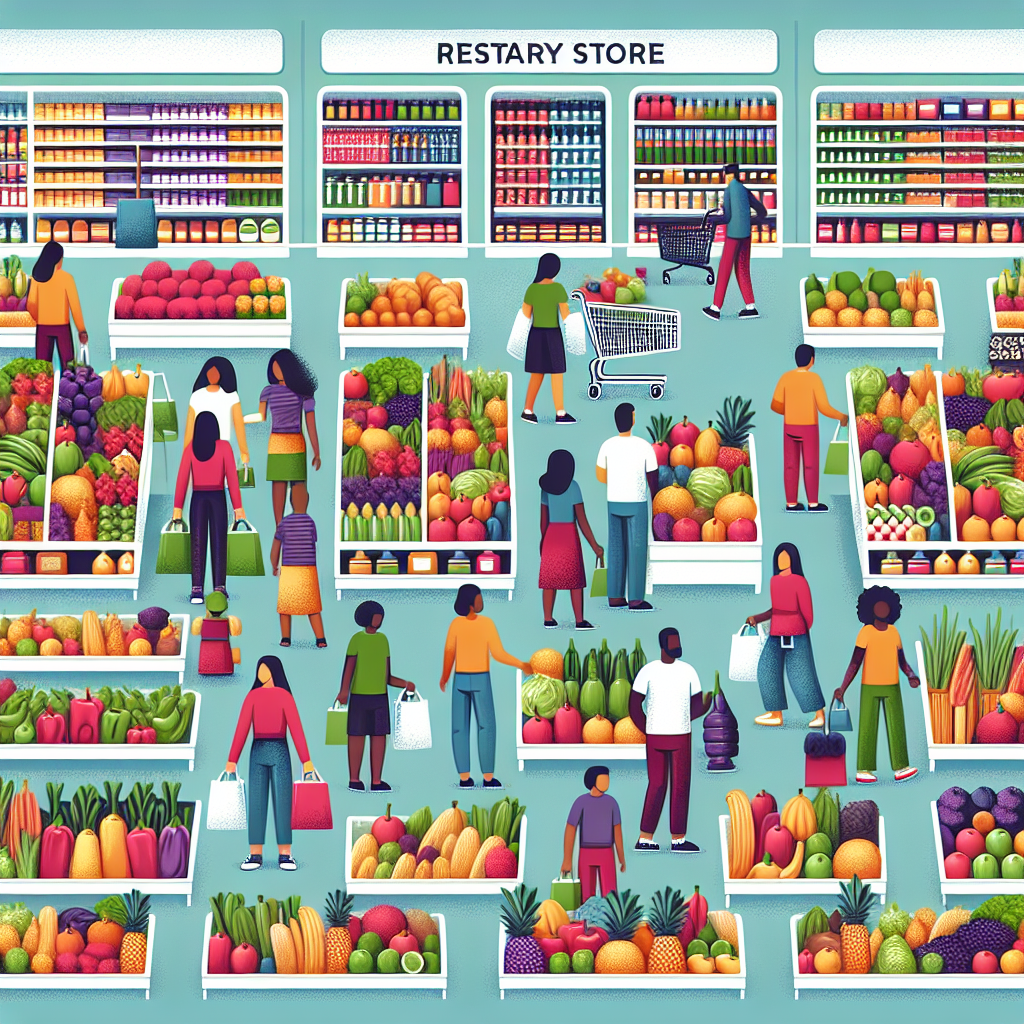Introduction
The grocery retail industry is a vital component of the global economy, serving as a primary source of food and household essentials for consumers worldwide. In recent years, the industry has experienced significant growth, driven in large part by the expanding middle class in emerging markets. This report will explore how the growing middle class is driving grocery retail sales, including an analysis of key trends, challenges, and opportunities in the industry.
Global Grocery Retail Market Overview
According to a recent report by CulinaryCoverage.com, the global grocery retail market is projected to reach $12 trillion by 2025, with a compound annual growth rate (CAGR) of 5%. This growth is driven by increasing urbanization, rising disposable incomes, and changing consumer preferences. The market is highly fragmented, with numerous players ranging from small mom-and-pop stores to large multinational chains.
Market Share
The grocery retail market is dominated by a few major players, including Walmart, Costco, and Kroger in the United States, and Carrefour, Tesco, and Aldi in Europe. These companies have a significant market share and a strong presence in multiple regions. However, the market is also seeing increased competition from online retailers such as Amazon and Alibaba, who are disrupting traditional brick-and-mortar stores.
Financial Performance
In 2024, the top 10 grocery retailers globally generated combined revenues of over $2 trillion. Walmart, the largest player in the market, reported revenue of $500 billion, followed by Carrefour with $100 billion. These companies have been able to maintain strong financial performance by leveraging their scale, operational efficiencies, and strategic partnerships.
Impact of the Growing Middle Class
The expanding middle class in emerging markets, particularly in countries like China, India, and Brazil, has been a key driver of growth in the grocery retail industry. As incomes rise, consumers have more disposable income to spend on food and other essentials. This has led to increased demand for higher-quality products, convenience, and a greater variety of choices.
Changing Consumer Preferences
With the rise of the middle class, consumer preferences have also evolved. In addition to price and convenience, consumers are now looking for products that are sustainable, organic, and ethically sourced. This has prompted grocery retailers to expand their offerings to include more organic and locally sourced products, as well as to invest in sustainable practices such as reducing food waste and plastic packaging.
Increased Spending on Food and Beverage
The growing middle class has led to an increase in spending on food and beverage products. According to a report by CulinaryCoverage.com, the average household in emerging markets now spends 50% of its income on food, compared to 30% in developed countries. This shift in spending patterns has created new opportunities for grocery retailers to cater to the needs of middle-class consumers.
Challenges and Opportunities
While the growth of the middle class presents significant opportunities for grocery retailers, it also brings challenges that must be addressed. One of the key challenges is the need to adapt to changing consumer preferences and behaviors. Retailers must invest in technology, data analytics, and supply chain management to meet the evolving needs of customers and remain competitive in the market.
Opportunities in E-commerce
One of the biggest opportunities for grocery retailers is the growth of e-commerce. Online grocery sales are expected to reach $500 billion by 2025, driven by the increasing adoption of digital platforms and the convenience of home delivery. Retailers that invest in e-commerce capabilities and provide a seamless online shopping experience will be well-positioned to capture a larger share of the market.
Sustainability and Social Responsibility
Another opportunity for grocery retailers is to focus on sustainability and social responsibility. Consumers, especially the growing middle class, are increasingly concerned about the environmental impact of their purchases and the ethical practices of companies. Retailers that prioritize sustainability, such as reducing food waste, sourcing products ethically, and supporting local communities, can build trust with customers and differentiate themselves in the market.
Future Outlook
Looking ahead, the grocery retail industry is poised for continued growth, driven by the expanding middle class and changing consumer preferences. Retailers that are able to adapt to these trends, invest in technology and sustainability, and provide a seamless shopping experience will be well-positioned to succeed in the market. By understanding the needs and preferences of the growing middle class, grocery retailers can capture new opportunities and drive sales growth in the years to come.
In conclusion, the growing middle class is a significant driver of grocery retail sales, presenting both challenges and opportunities for retailers. By focusing on consumer preferences, sustainability, and e-commerce capabilities, retailers can position themselves for success in a rapidly evolving market.



